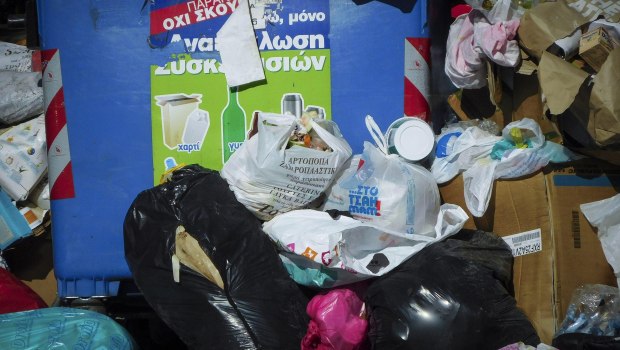ICAP: The hotel market is “running” with an annual growth rate of 26%
Source: Tornos News
Revenue growth, increased turnover, and higher gross profits were recorded in the hotel market during 2022/2023. However, balance sheets of hotel companies show that operating profits followed a negative trajectory despite higher turnover, creating pressure on profit margins.
According to the ICAP CRIF Sectoral Study titled “The Hotel Sector as a Strong Pillar of the National Economy”, the total market size (revenues) of 5-, 4-, and 3-star hotels has shown a significant recovery since 2021, with an average annual growth rate of 26% over the period 2021–2024.
From 2013 to 2019, the total market size of 5-, 4-, and 3-star hotels recorded an average annual growth rate of 8%, supported by steady increases in tourist traffic. In 2020, with the pandemic, the picture collapsed: the market shrank by more than 70% compared to 2019.
Notably, the hotel sector achieved a strong rebound in 2022, as the total market size far exceeded the 2019 pre-pandemic level.
In 2024, 4-star hotels captured the largest share of total hotel market value, representing about 44%. They were followed by 5-star hotels with 40% and 3-star hotels with 16%.
At the same time, analysis of a consolidated balance sheet based on a representative sample of 94 companies in the sector for 2022–2023 shows that total turnover increased by 11.5% in 2023 compared to 2022, while gross profits rose by 13.8%.
However, profit margins came under pressure as:
- operating results fell by 18.2% due to reduced supplies,
- pre-tax profits decreased by 21.4%,
- EBITDA (earnings before interest, taxes, depreciation, and amortization) declined by 3.3%.
Most businesses remained profitable, but 3 percentage points fewer compared to the previous year. Of the 94 companies included in the sample, 80 were profitable in 2023 (85.1%), compared with 83 (88.3%) in 2022.
International visitors fuel the upward performance of hotels, with foreign tourists being the main customer group, representing 85% of total overnight stays in 2024. After the sharp decline in overnight stays across hotel accommodations in 2020, recovery began in 2021, reaching nearly 117 million overnight stays in 2024 (an increase of 3.9%).
In terms of regional distribution of overnight stays in 2024, the South Aegean accounted for the largest share with 27.8%, followed by Crete with 24.8%. Seasonality was also a strong factor, with June, July, August, and September accounting for nearly 70% of total overnight stays in 2024. Average annual occupancy rates across hotels in Greece stood at 50.6% in 2024, down from 54.7% in 2023.
Foreign tourist arrivals reached a new record in 2024, hitting 36 million, a 9.8% increase compared to 2023. This upward trend is attributed to a combination of factors: Greece’s reputation as a safe destination, improved infrastructure, especially upgraded hotel capacity, systematic promotion abroad, and more. The two “traditional” source markets for Greek tourism in recent years have consistently been Germany and the UK. In 2024, approximately 5.4 million Germans and 4.5 million Britons visited Greece, jointly accounting for 27.6% of total arrivals. EU countries overall represented about 61% of total arrivals in 2024. In the first quarter of 2025, arrivals rose by 5.4% compared to the same period in 2024.
Tourism revenues have been rising since 2021, reaching €21.7 billion in 2024—up 5.5% from 2023. Revenues remained stable in the first quarter of 2025.
The study highlights the hotel sector’s role as a vital component of the tourism system and a key driver of Greece’s national economy. According to SETE estimates, the direct contribution of tourism to GDP stood at 12.7% in 2024 (€30.2 billion). Including multiplier effects, the indirect contribution reached around 31% of GDP, underscoring tourism as a central pillar of the Greek economy.
According to data from the Hellenic Chamber of Hotels, Greece had 10,104 hotel units in 2024 compared to 9,732 in 2010 (a cumulative increase of 3.8%). By category, the majority were 2-star hotels, numbering 3,251 in 2024 (32.2% of the total). The total number of hotel beds reached 894,854 in 2024. Regionally, the South Aegean held 239,047 beds (26.7%) and Crete 196,877 beds (22%). In terms of category distribution, the South Aegean had the largest share of 5-star beds in 2024 (34.3% of the national total) and also the largest share of 4-star beds (30.2%).
The largest Greek hotel groups (21 in total) control 165 hotels and over 60,000 beds. Among foreign hotel groups/brands, an estimated 230 hotels in Greece are owned or managed by them.
The original article: belongs to Tornos News .



